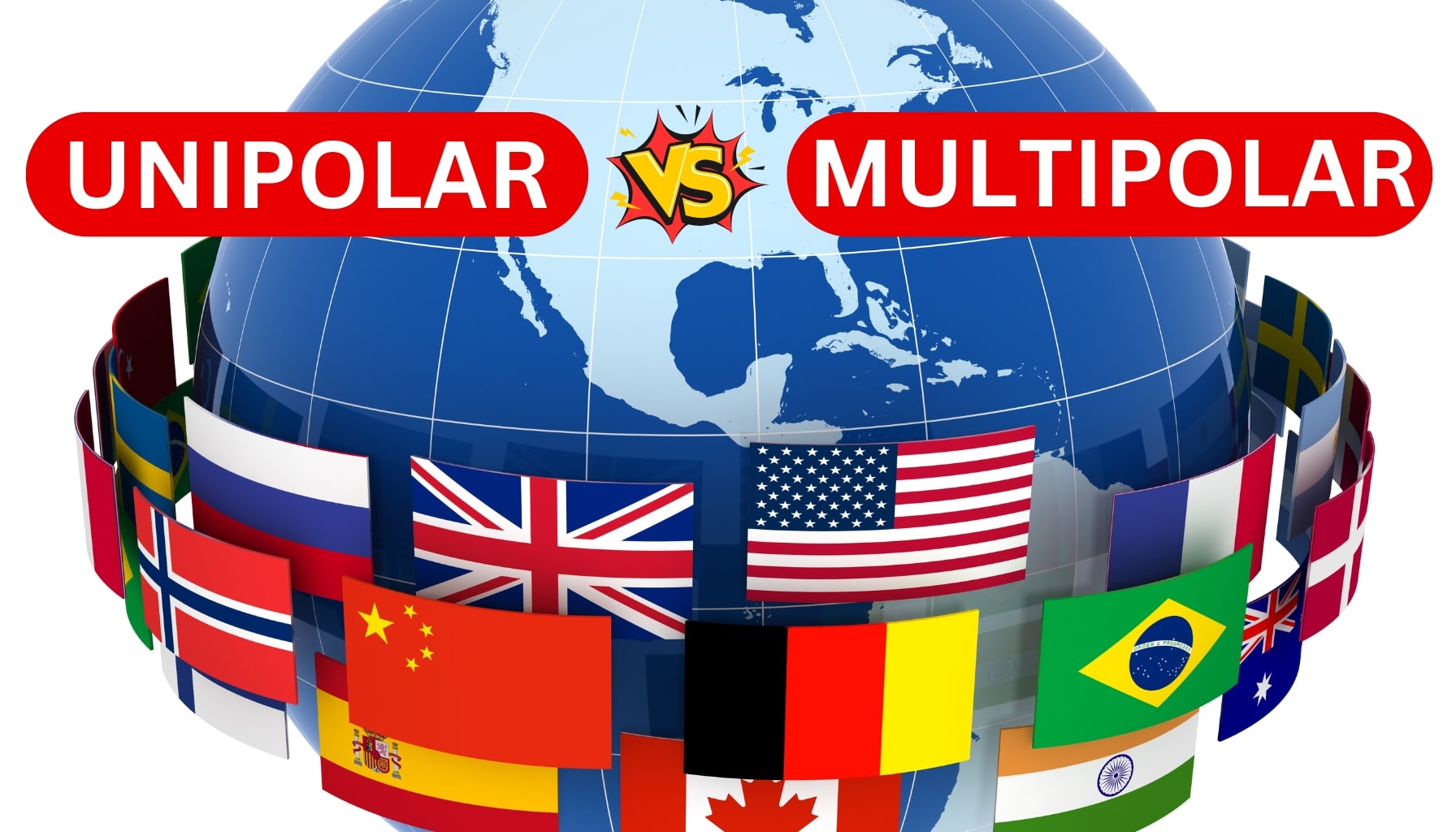
The global power structure has experienced profound transformations in recent decades, shifting from a unipolar to a more complex multipolar system. These shifts have far-reaching implications on diplomacy, global trade, security, and world order, reshaping how nations interact on the global stage. The terms “Unipolar” and “Multipolar” represent two distinct models of international relations, each with its own characteristics and consequences for global governance.
Table of Contents
1. Unipolar World
In a unipolar world, global affairs are largely dominated by one superpower. This system was established after the Cold War when the United States emerged as the undisputed leader in both political and military spheres. With its unparalleled economic strength, military might, and technological advancements, the U.S. became the primary driver of international norms and policies. The unipolar model facilitated a more centralised and efficient decision-making process, where one nation's dominance set the global agenda. However, this concentration of power often led to friction and tensions, particularly with countries that resisted U.S. influence. The centralised control sometimes resulted in decisions that did not always consider the interests of other nations, leading to imbalances and conflicts.
2. Multipolar World
In contrast, a multipolar world is characterised by the existence of multiple power centres, where several nations or regions share influence over global affairs. Countries like China, Russia, India, and the European Union have emerged as influential players in the international arena, each contributing to a more decentralised power structure. This system promotes a more balanced distribution of power across the globe, where no single nation or region can dominate or dictate terms. A multipolar world encourages cooperation, as decision-making must involve multiple stakeholders, but it also introduces new challenges. The diversity of interests among major powers often leads to competing priorities, creating a complex geopolitical landscape that requires intricate negotiations and diplomacy.
3. The Shift from Unipolar to Multipolar
Over the past few decades, the world has witnessed a gradual but notable shift from a unipolar order to a more multipolar world. The rise of emerging economies, particularly in Asia, has been a driving force behind this change. China's rapid economic growth and expanding military capabilities, Russia's assertive foreign policies, and the European Union's evolving political role have collectively contributed to the diversification of global power. The shift reflects a broader trend toward the decentralisation of global influence, where no single nation—be it the U.S. or any other—is able to unilaterally dictate the course of global events. This change marks a departure from the post-Cold War world order, where U.S. dominance was largely unchallenged.
4. Implications of a Multipolar World
A multipolar world brings both opportunities and challenges for global governance, with significant implications for international cooperation and competition.
- Global Cooperation: One of the major benefits of a multipolar world is the potential for enhanced cooperation among multiple powers. With more influential players on the global stage, there is a greater need for dialogue and collaboration to maintain global stability, particularly in areas like climate change, trade, and security. Multilateral agreements and organisations become increasingly important as countries must work together to address shared challenges.
- Increased Competition: However, the rise of multiple powerful nations can also lead to increased competition. Countries may vie for influence in different regions, pursue divergent economic and political strategies, and engage in rivalries for leadership in global institutions. This competition can result in geopolitical tensions, as nations protect their interests and push back against perceived encroachments by others.
- Challenges in Decision-Making: One of the drawbacks of a multipolar world is the complexity of decision-making. With several major powers involved, reaching consensus on global issues can become more difficult and time-consuming. Differing priorities, values, and ideologies among countries can slow down diplomatic processes and hinder the development of coherent policies on issues like trade, security, and international law.
- New Alliances: As the global power structure becomes more diffuse, countries may seek new alliances and partnerships to balance the influence of other powers. This can result in shifting coalitions, where countries form alliances based on shared strategic interests rather than historical relationships. These new alliances can alter the existing global balance and introduce fresh dynamics in international relations.
While the unipolar world of U.S. dominance provided a clear and structured global order, the transition toward a multipolar world offers a more complex and dynamic international system. The rise of multiple influential powers signals the end of the era of unchallenged dominance, replacing it with a more competitive, yet cooperative, global order. This shift presents both opportunities and challenges, as countries navigate a world where negotiation, collaboration, and competition will define international relations.
The future of global governance will depend on how these new power centers manage their interactions, resolve conflicts, and work together to address the world's most pressing challenges. Ultimately, the evolution from a unipolar to a multipolar world order highlights the growing interdependence of nations and the need for a more inclusive approach to global problem-solving.




